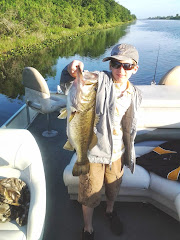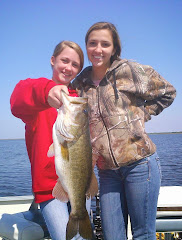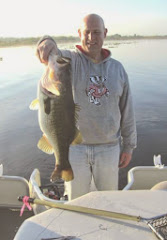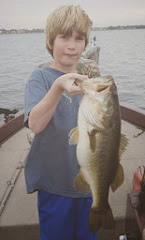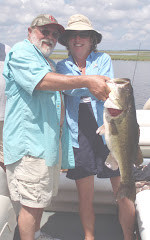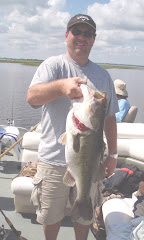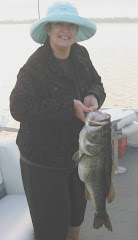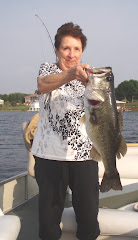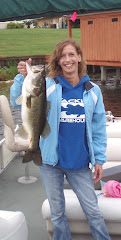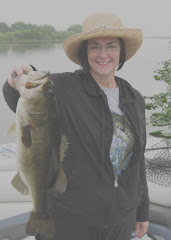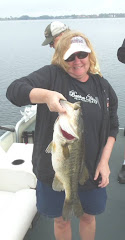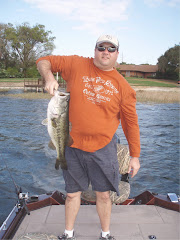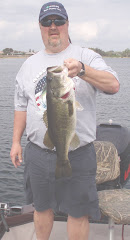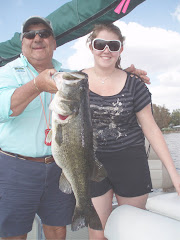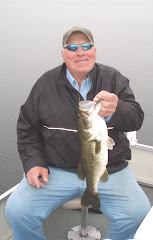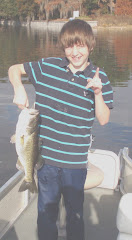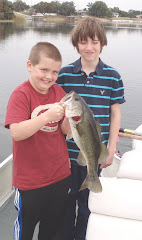First I think it would be good for you to understand the impact that the fishing industry has on the state of Florida. Florida is considered the “Fishing Capital of the World.” This title is backed up by surveys done every 5 years by the US Census Bureau. According to the Florida Fish and Wildlife Conservation Commission, the economic impact is somewhat staggering. Overall retail sales are $4.4 billion (yes, that’s billion) with freshwater sales making up $1.5 billion of that. It supports 75,736 jobs of which 23,480 jobs are in freshwater, yielding $728,646,722 in salaries, wages, and business owner’s incomes. Non-resident fishing expenditures total $1 billion, for a total economic output (ripple effect) of $7.5 billion. What that means for the state directly is $550 million in state and local tax revenues … more than 3 times the revenue from oranges! Florida has 2.8 million anglers, with 885,000 being non-residents.
Mother Nature’s “Cleansings”?
It’s not just the over-catching of these fun and tasty creatures that have caused this. Natural causes have also had their effects on Florida. The hurricanes of a few years ago took their toll as various news media made it clear that these immense storms can cause devastation, but it may be difficult to see how hurricanes and tropical storms could affect fish. Yet it becomes evident when you see fish kills following a major storm event, due to several occurrences. There can be changes in the saline content in freshwater due to a saltwater storm surge. Flooding waters can carry fish into low lying areas and, once the flood waters recede, the fish are left in pools that eventually dry up, leaving dead fish.
Low oxygen content is the most common cause of storm-induced fish kills. This happens from excessive wind pushing the surface water to one end of the lake. Then the water from the bottom rises to the surface, bringing all of the bottom debris with it, which is naturally low in oxygen. In addition, this bottom water may include hydrogen sulfide which, when in high enough concentrations, can be lethal to fish; and can be detected by any "rotten egg" or "sewage" odors. Bacteria present in the sediments brought to the surface also uses up oxygen. I’m sure you’ve heard the phrase, “The lake has turned over."
Florida, known as the Sunshine State, rarely has long periods of cloudy days, except for storms of this type. During this time, photosynthesis in organisms and aquatic plants is reduced. Therefore, these oxygen-producers use up what’s already in the water, causing an overall depletion of oxygen, leading to fish kills.
Although we do normally get a lot of sunshine, it’s not always associated with heat. Recent cold snaps have affected Florida's freshwater and marine fisheries as water temperatures dropped below normal for extended periods. Hundreds of reports of cold-related fish kills occurred across the state last year. Fish may either die from cold stress or become more susceptible to disease. Warm-water species are more vulnerable to cold temperatures. In fresh water, some native fish have been impacted, although most deaths occurred among non-native species, such as tilapia. As a reminder, harvesting distressed or dead fish for consumption is not advised under any circumstances.
Disease Infestation
The largemouth bass virus, LMBV, is the only virus to have been associated with a lethal disease of largemouth bass. While LMBV has been isolated from a lot of other species of warm-water fishes, the disease response has only been observed in largemouth bass. Since 1995, LMBV has been implicated as a source of mortality in more than 25 fish kills in the United States, specifically throughout the Southeast and the Midwest. Fortunately, evidence suggests that fish populations develop immunity following exposure to the virus. Fish kills associated with LMBV have also declined over time, and to our knowledge, none have been observed over the past two years. In fact, fish kills which may be a result of LMBV have been rarely reported in Florida during the past 10 years. Although, in the past 3 years, three fish kills in Florida were evaluated as potentially being caused by LMBV. A bass die-off in a private pond near Tampa was diagnosed as being caused by low oxygen levels. A second disease event at Lake Butler in Orange County in 2003 was associated with an outbreak of bacteria. In 2004, a die-off of largemouth bass at Lake Hollingsworth in Polk County followed a lake-wide alum treatment by the county, and the results of the investigations were inconsistent with LMBV disease.
Research of LMBV is ongoing at the University of Florida, U.S. Fish and Wildlife Service, Auburn University, and the Florida Fish and Wildlife Conservation. Disease and fish kills in bass have not been linked to LMBV in Florida. However, buoyancy problems and swim bladder lesions, symptoms associated with the virus, and an antibody response to the virus were observed in bass following a bass-only fish kill in Lake Harris in the early 1990s. The bass virus was also isolated from bass that had been collected from Lakes Weir and Holly during a disease episode in this same period of the 1990s.
Tissue and blood samples collected from bass in 45 water bodies since 1999 indicated that the virus, but not the disease, is widely distributed throughout Florida. Results of laboratory studies strongly suggest that many bass become immune upon exposure to LMBV. A distinction should always be made between fish that are infected with LMBV and fish that are diseased as a result of the virus. Almost all of the populations sampled in Florida and included in this data were not experiencing disease problems or fish kills.
There are limits as to how many game and nongame freshwater fish you can keep and retain, and this varies from one body of water to another. In addition, there are various regulations on the methods of taking freshwater fish. To find out these regulations, pick up a Florida Freshwater Fishing Regulations booklet at your local tackle or marine dealer.
 The restrictions are much tighter on Florida’s largemouth bass than on panfish, such as bluegill, sunfish, crappie, shellcracker, etc. But due to a number of factors, the limits have been reduced on them, too. Although we have such a widely dispersed population of freshwater fish, being able to fish within a 30-60 minutes drive of anywhere in the state, conservation is more paramount than ever. Information gathered lately shows that the resources have been slowing eroding. If you talk to anyone who has fished Florida for many years, they will tell you that it’s not “like the good ol’ days” when they could catch stringers upon stringers of bass; not to mention the coolers full of panfish. The trophy populations of all freshwater fish have also declined severely. That is why catch limits have been reduced … to protect one of Florida’s greatest forms of entertainment and revenue resources, the fishing industry.
The restrictions are much tighter on Florida’s largemouth bass than on panfish, such as bluegill, sunfish, crappie, shellcracker, etc. But due to a number of factors, the limits have been reduced on them, too. Although we have such a widely dispersed population of freshwater fish, being able to fish within a 30-60 minutes drive of anywhere in the state, conservation is more paramount than ever. Information gathered lately shows that the resources have been slowing eroding. If you talk to anyone who has fished Florida for many years, they will tell you that it’s not “like the good ol’ days” when they could catch stringers upon stringers of bass; not to mention the coolers full of panfish. The trophy populations of all freshwater fish have also declined severely. That is why catch limits have been reduced … to protect one of Florida’s greatest forms of entertainment and revenue resources, the fishing industry.Law of the Wild
The “Law of the Wild” says kill only when you are hungry. A photographer captured these amazing pictures a couple of years ago and said he was astounded by what he saw:
"These three brothers (cheetahs) have been living together since they left their mother at about 18 months old,' he said.’ On the morning we saw them, they seemed not to be hungry, walking quickly but stopping sometimes to play together. 'At one point, they met a group of impala who ran away. But one youngster was not quick enough and the brothers caught it easily'." These extraordinary scenes followed.
Then they just walked away without hurting him.
When fishing, we too should only keep what we are going to eat, and release the rest. This is why I am so adamant about Catch, Photograph, Release (CPR). That is what this lady, Sheila Daniel of Charlotte, NC, has done every year for over 10 years, as she comes to fish with me every spring … and has caught at least one bass over 8 lbs every year.
Note that even the cheetahs realize that the younger meat is the best, so let your trophies go to make more babies … for your babies to be able to grow up and catch them!










